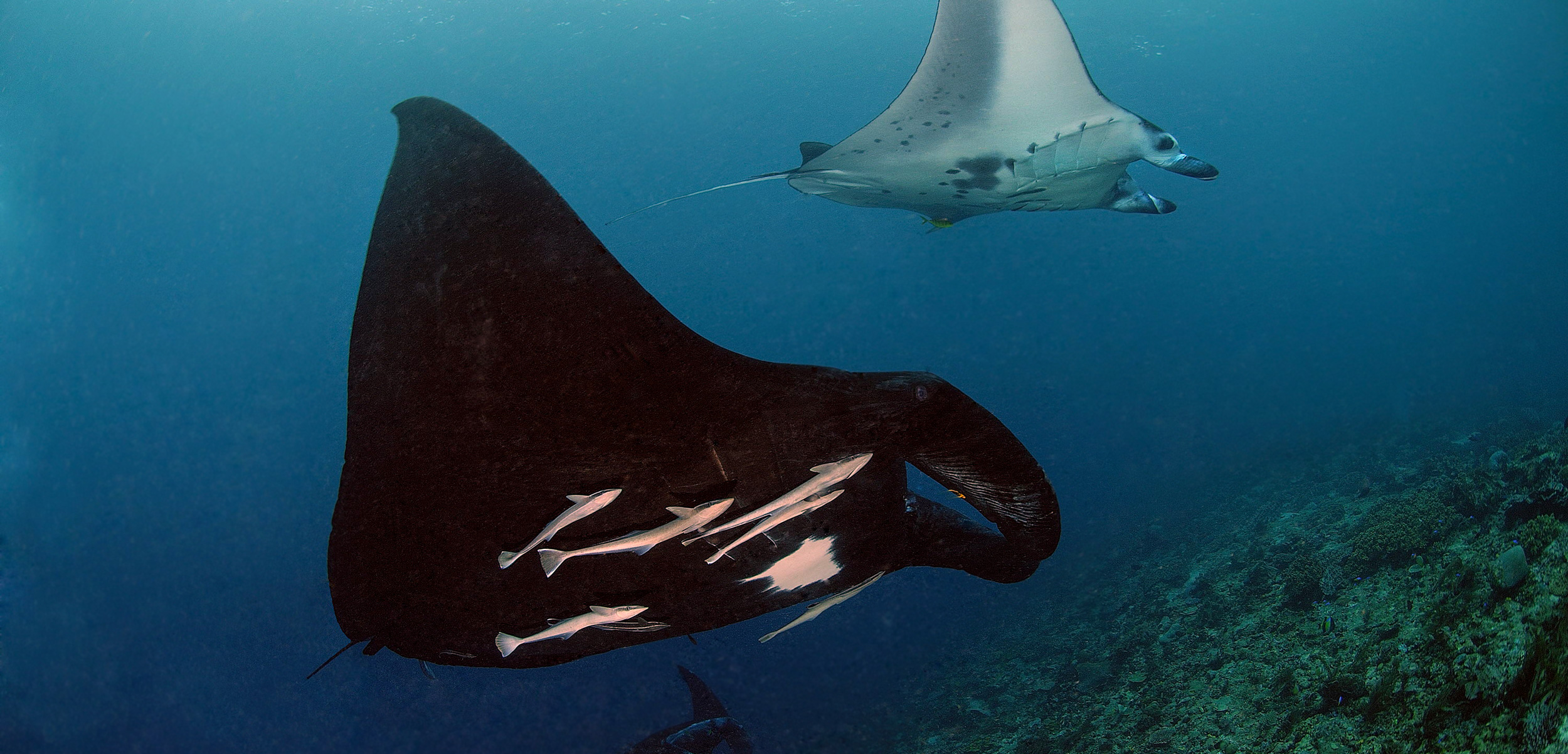For Manta Rays, Survival Isn’t Black and White
Does a manta ray’s coloration help it survive predation?
Article body copy
Why are some manta rays all black? Biologists investigating this question have come to a surprising conclusion: selective evolution seems to have nothing to do with it.
Creatures throughout the animal kingdom can exhibit melanism—an increased amount of pigmentation that turns them darker than usual and sometimes completely black. It has been observed in everything from penguins to cats, mice, and insects. Perhaps the most famous example is the black panther. But melanism is incredibly rare in the ocean—manta rays are the most prolific example.
Like many marine creatures, including dolphins and white sharks, mantas are predominantly dark on top with light underbellies. Researchers typically think that this color pattern, called countershading, offers an advantage as a form of camouflage. When viewed from above, a dark back helps an animal to blend with darker, deeper waters, and when viewed from below, a light belly helps them to blend with the sunlit surface and sky, making them less visible to predators.
Marine biologist Stephanie Venables, a doctoral student at the University of Western Australia, decided to explore whether melanistic manta rays were more likely to be targeted by predators.
Venables and her team first trawled through a catalog of more than 3,000 reef mantas and more than 3,000 giant mantas photographed in the Indian and Pacific Oceans from 2003 to 2018. West Papua, Indonesia, had the highest record of melanism: 40 percent of its reef mantas were all black. Hawai‘i had none.
The researchers then compared survival rates over the years between black mantas and typical-colored mantas at three locations with high instances of melanism. Surprisingly, they report, there was no difference: predators such as sharks targeted the two color morphs at the same rate. “I assumed predation might be driving [melanism rates], and apparently it’s not,” says Andrea Marshall, a conservation biologist in Mozambique with Marine Megafauna Foundation and a coauthor of the study. She wonders if that means countershading is less important for camouflage than has been theorized.
Venables’s best guess is that the color pattern is a result of a random process called genetic drift, when a trait randomly pops up in a population. “If there’s no benefit or if there’s no disadvantage, there is no reason for it to get weeded out [or selected for],” she says.
Eduardo Eizirik, a biologist at Pontifical Catholic University of Rio Grande do Sul in Brazil, who was not involved in the study, notes that melanism has been spotted in 15 of the approximately 40 species of wild cats. In some cases, he notes, selection seems to favor melanism: melanistic leopards are more common in darker, shaded forests, suggesting a camouflage benefit. In other cases, melanism seems to be selected against: in open, dry habitats, black individuals are virtually absent. In still other instances, melanism seems to confer no particular advantage or disadvantage—as with the studied manta rays. “I think it is an important contribution to document these patterns of melanism in this poorly-studied organism,” Eizirik says.
Venables says that her study really just presents more questions about melanism. “Why does it exist in the first place, and why is it more prolific in some populations than others?” she asks.
For Marshall, one of the most interesting things to come from this study is how it has helped people to relate to rays and empathize with them. Just like people, she says, mantas “have different colors, it doesn’t make them any different.” Black or black-and-white, she says, they are just the same.

